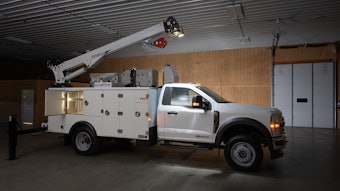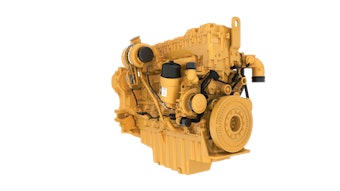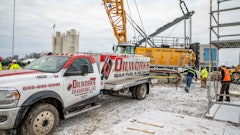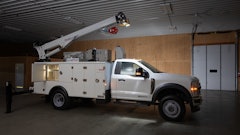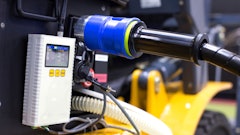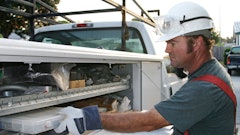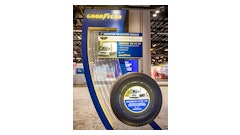The new rear visibility portion of Federal Motor Vehicle Safety Standard FMVSS 111 rear visibility field of view regulation - applicable to vehicles with a 10,000-lb. GVW or less - will phase in for altered vehicles starting May 1, 2017. Full rear visibility conformance is required by May 1, 2018.
FMVSS 111 rear visibility has traditionally been the standard for mirrors and now includes rear camera systems. The change to include rear vision systems in the Standard comes from the Cameron Gulbransen Kids Transportation Safety Act of 2007, in which NHTSA was directed to undertake a rulemaking process to expand the required driver field of view in order to reduce backover accidents. This extended area is a 10-ft. by 20-ft. space directly behind a vehicle which traditional mirrors do not enable a driver to fully view. The test used to verify these requirements includes a series of seven specifically sized cylindrical objects with either a horizontal band or vertical stripe applied. They are located in designated positions along the perimeter of this area.
There are a series of performance requirements for the rear vision systems in this new portion of FMVSS 111. Full compliance is required for vehicles with a GVWR of 10,000 lbs. or less, manufactured on or after May 1, 2018. However, the phase-in for the Standard calls for the field of view criteria to be met (where it applies to altered vehicles) beginning May 1, 2017. This means a vehicle that is completed on or after this date and equipped with a rear vision system already meeting field of view requirements must continue to do so after it is altered. For example, when performing a pickup box removal on a truck meeting the field of view requirements with the OEM camera system, the camera will need to be reinstalled (or an equivalent, compatible camera installed) on the new body and in a position which continues to satisfy the field of view requirements. A conservative assumption is vehicles on which you are removing and reinstalling (or replacing) a rearview camera on or after May 1, 2017, will need to be evaluated for field of view.
On May 1, 2018, the other FMVSS 111 rearview system performance requirements, in addition to field of view, take effect. Most of these involve system hardware and electronics characteristics, such as response time, linger time, deactivation, default view and durability. Another requirement is image size, which can be affected by the camera and its location when replacing or relocating an OEM-supplied unit. Reviewing chassis manufacturers’ incomplete vehicle documents will be an important first step in preparation for completing vehicles from chassis cabs, cutaways, etc. This will enable you to see what is involved with compliance to FMVSS 111 for the particular vehicle.
Although the rule is currently in the proposed status, Canada is planning to adopt these same requirements within Canada Motor Vehicle Safety Standard 111. However, the proposed regulation does not include a phase-in period and would instead require full compliance as of May 1, 2018.
National Truck Equipment Association (NTEA) members can call (800-441-6832) or email the Technical Services Department with questions. NTEA offers a FMVSS Field of View Conformity Manual and Kit.
